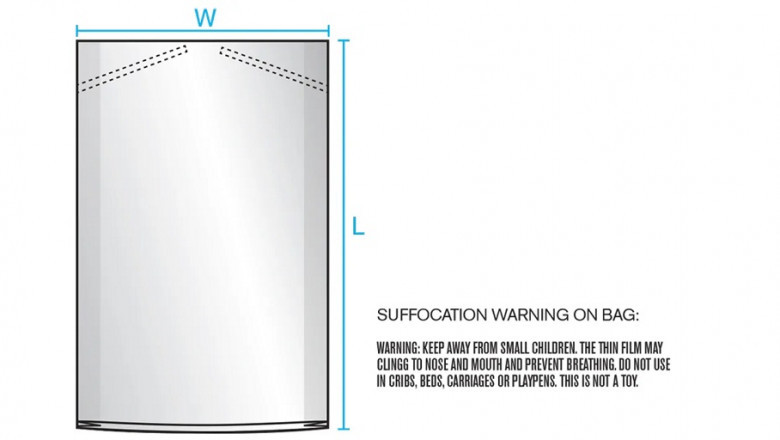views

The clothes make the man, or so they have said. Whether that is true or not, clothing can cost a pretty penny, and it behooves a conscientious keeper of any wardrobe to afford the proper protection to his or her finery in transit and storage.
To do so, you’ll need to observe a few best practices. Here’s your crash course, from damaging factors to types of materials affected to the difference between long and short-term storage bags (if your organization needs wholesale garment bags, read on before buying).
Environmental Factors and Conditions That Can Damage Garments Garments -
all sorts of garments, including tops, bottoms, and outerwear - can be damaged when improperly protected or stored. Moreover, a wide range of environmental factors can have lasting effects on natural materials and textiles, including but not limited to:
● Extreme temperatures (predominantly high temperatures)
● Exposure to rain, sleet, hail, or snow
● Exposure to high atmospheric humidity
● Cloth-eating pests, such as moths
● Exposure to light, both natural and artificial
● Rapid changes in environmental conditions
● Mold, mildew, and other fungi.
While these ills affect mostly natural fibers, nearly any garment can be damaged by exposure to these conditions, including:
● Wool
● Cotton
● Linen
● Silk
● Rayon
● Polyester
● Satin
● Lace
● Leather and suede
● Furs
● Rayon
● Velvet
● And many more
Given the fact that nearly any garment can be damaged through improper storage, it is vital to afford the proper storage. However, proper storage for clothing and other garments is different in the long and short term - here’s what you need to know.
Short-Term Protection
Short term garment protection predominantly has to do with protecting clothing against environmental hazards while in transit. This includes but is not limited to protecting coats and suits against rain, snow, sleet, hail, sun, and incidental damage while traveling to and from a venue, a cleaner, or elsewhere.
In the short term, probably the most important thing to remember is that keeping a garment dry is imperative.
This is why many wholesale garment bags are made from waterproof polyethylene. This material can protect clothing against water, whether in the form of rain, salt spray, sleet, or snow, keeping it safe and dry during transit.
And don’t worry about cluttering - polyethylene (commonly used to make travel garment bags) is non-toxic and easily recyclable.
Long-Term Protection
While it is acceptable to store a garment for the short term in a waterproof, poly clothing bag, it is important that you never store a garment (no matter what it is made of) in one for the long term.
This is because the same feature that doesn’t let water in makes it difficult for water to get out. Hanging a garment for a long period of time in a waterproof plastic travel bag will trap moisture and can encourage the growth of mold, mildew, and bacteria that will break down the garment’s natural fibers. Also, trapping moisture and air can also allow odors to set in.
Instead, during long periods of storage, suits and other garments should be stored in breathable, cloth bags, in a cool, dry location that is out of the light.
For long-term storage, woven bags are superior because they allow excess moisture to escape, fighting pests, mold, and odors. Also, woven bags tend to be opaque, preventing light damage to the garment.
However, since woven bags do not protect the garment from moisture, it is imperative that you store your garments in a location with the proper atmospheric and environmental conditions; preferably somewhere cool, dry, dark, and free of the other harmful influences mentioned at the beginning of this article.
For More Information about Poly Tubing Bags and Wholesale Poly Bags Please Visti: Edcosource.












